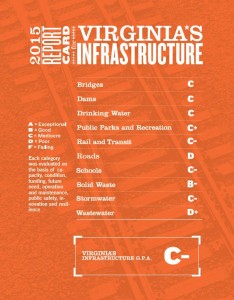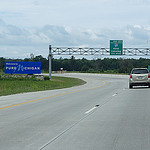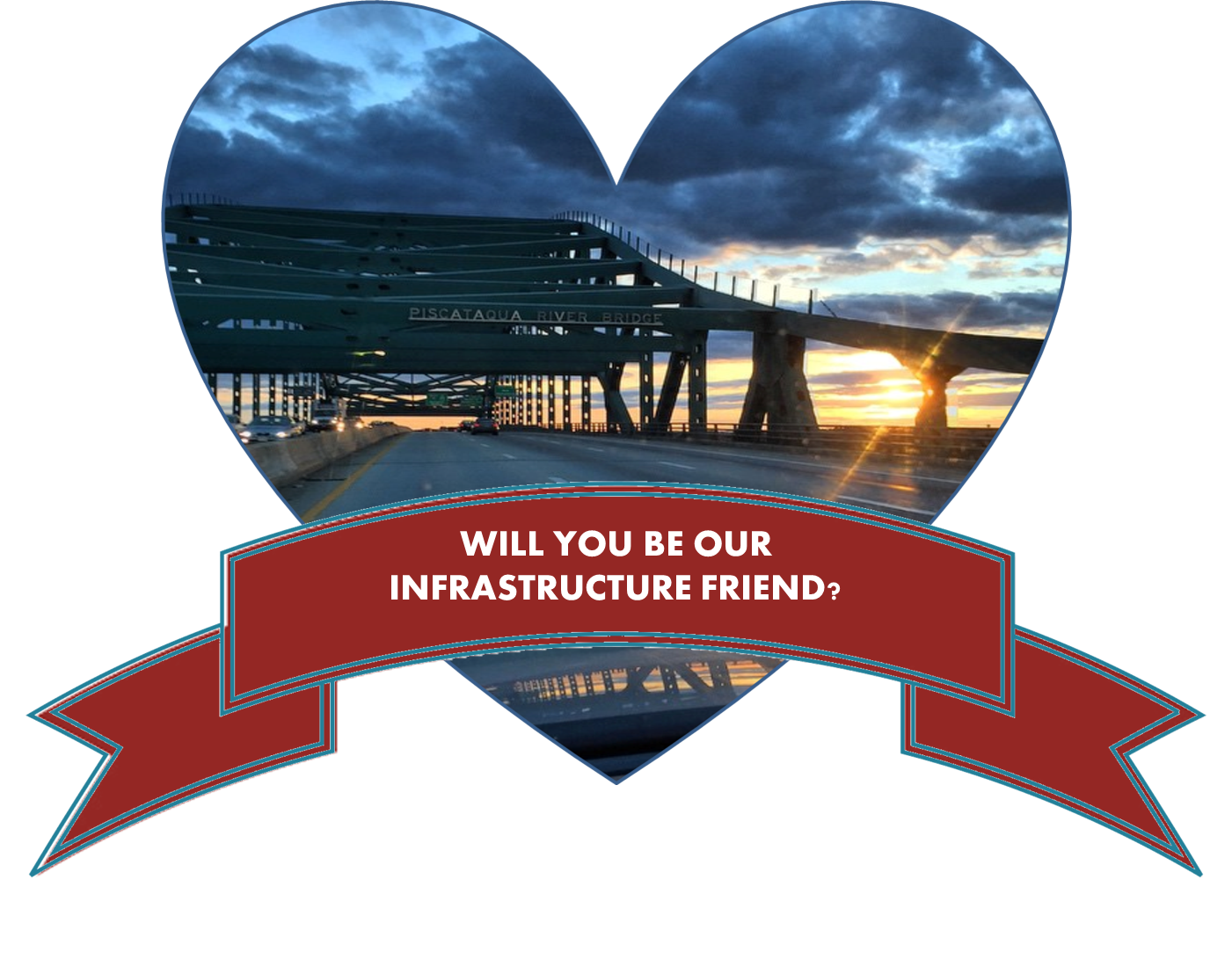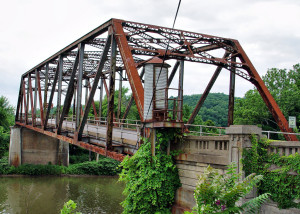HBO comedy program, new rail legislation bring hope for infrastructure renewal
March 6th, 2015 | By: Olivia Wolfertz
When our nation’s infrastructure woes become the source of comedic entertainment on a major cable channel—it underscores that the problem must be addressed. Fortunately, action on Capitol Hill pressing for funding legislation and transportation reform is already underway. It is not news that our nation’s roads, bridges and transit need maintenance, but when popular television shows bring these issues to light, they become harder to ignore. John Oliver’s HBO episode (containing adult content) featuring our nations “roads, bridges, dams … basically anything that can be destroyed in an action movie,” showcases deteriorating infrastructure conditions in a comedic yet effective manner. He highlights the widespread need for all areas of America’s infrastructure to be addressed, reminding us of daily water main breaks, cracks in bridge support beams and other evidences of needed infrastructure repair. Secretary Foxx took center stage on the issue this week, speaking to the Senate Commerce Committee and promoting the Obama Administration’s funding plan for a six-year, $478 billion surface transportation bill which would be funded through a new tax on overseas corporate earnings. In addition to surface transportation, Federal Aviation Administration (FAA) Administrator Michael Huerta urged lawmakers to create stable, long-term funding and “operational flexibility” in reauthorizing legislation set to be debated in Congress this year. Huerta underscored the Obama Administration’s support for raising passenger facility charges (PFCs) to $8.00 per leg, per flight which is in line with ASCE’s policy recommendation. This funding would go towards airport modernization and traveler experience upgrades. On Wednesday, the House of Representatives passed by an overwhelming margin (316-101), bipartisan legislation that would reauthorize national passenger rail programs for a four-year period. The bill seeks to reform Amtrak by reducing costs, creating greater accountability and transparency, leveraging private sector resources, and accelerating rail project delivery. “The Passenger Rail Reform and Investment Act will vastly improve commuter and passenger rail systems across the country, helping save American families’ time and money in transportation costs,” said Jeff Denham, chairman of the hazardous materials subcommittee of the transportation and infrastructure committee. While funding legislation for aviation and Amtrak is encouraging, it is still critical that Congress work quickly to pass legislation to provide a sustainable, long-term funding solution to #FixTheTrustFund.Tags: highway trust, infrastructure, legislation
No Comments »
Utah's Infrastructure Receives First Report Card
February 23rd, 2015 | By: Infrastructure Report Card
Join the Utah Section of the American Society of Civil Engineers (ASCE) for the release of the 2015 Report Card for Utah’s Infrastructure on Tuesday, Feb. 24. The report includes evaluation of Utah’s bridges, canals, dams, drinking water & supply, hazardous waste, levees, roads, solid waste, transit, and wastewater & stormwater. WHAT: Press Release of the 2015 Report Card for Utah’s Infrastructure WHO: Utah Section of the American Society of Civil Engineers David Eckhoff, P.E., PhD, American Society of Civil Engineers Andrew Gruber, Executive Director, Wasatch Front Regional Council Ari Buening, COO, Envision Utah WHEN: Tuesday, Feb. 24, 2015, 10 a.m. WHERE: Utah State Capitol Presentation Room, First Floor, Salt Lake, UT WHY: Infrastructure has a direct impact on our lives every day—from the water we drink, to the roads and rails we travel. Infrastructure is vital to our economy, security, recreation and safety. Will Utah’s infrastructure systems make the grade? Can’t attend but want to see the Report Card tomorrow? Find it here.Tags: infrastructure, report card, Utah
No Comments »
2015 Report Card for Iowa’s Infrastructure Arrives Next Tuesday
February 19th, 2015 | By: Infrastructure Report Card
The Iowa Section of the American Society of Civil Engineers (ASCE) will release the inaugural 2015 Report Card for Iowa’s Infrastructure on Tuesday, February 24. The report includes evaluations of Iowa aviation, rail, inland waterways, roads, bridges, dams, levees, drinking water, wastewater, electrical energy, and solid waste.News conference on release of the 2015 Report Card for Iowa’s Infrastructure
WHO: American Society of Civil Engineers – Iowa Section
Speakers:
- Joe Spradling, P.E., president, Iowa Section ASCE
- Aaron Granquist, P.E., author and member, Report Card Committee
- Director Debi Durham, Iowa Economic Development Authority
WHEN: Tuesday, February 24, 2015 at 10:30 am
WHERE: Wallace Building Auditorium, 502 E 9th Street, Des Moines, Iowa
Tags: bridges, economy, infrastructure, Iowa, report card, roads, transportation, water
No Comments »
Show Your Love for Infrastructure
February 13th, 2015 | By: Infrastructure Report Card
Since we launched our Infrastructure Friends network with the release of ASCE’s 2013 Report Card for America’s Infrastructure we’ve seen a wave of new momentum on infrastructure issues in every state and in DC. We hope you’ll join our effort and be a friend to America’s infrastructure!
Tags: friend, infrastructure, report card
No Comments »
This Week in Infrastructure: Infrastructure Won't Fix Itself
February 13th, 2015 | By: Olivia Wolfertz
It is not a news flash that America’s infrastructure needs serious attention and investment. In light of increased attention to our nation’s surface transportation needs, many states are proposing increasing the gas tax to fund transportation. In addition, there has been an uptick in the number of news stories highlighting the need to be more strategic in the way we fund infrastructure. After chunks of concrete fell this week from a bridge on the DC Beltway in Maryland onto a moving vehicle, Manager of Public and Government Affairs at AAA Mid-Atlantic said “this is yet another reminder of why transportation funding in Maryland is so critically needed.” This incident prompted Transportation Secretary Anthony Foxx to underscore the necessity of providing funding to maintain and repair the nation’s bridges. Pennsylvania’s bridges have also received media attention lately, with 22 percent of the state’s bridges classified as structurally deficient, making it the highest percentage in the country. In an effort to fund their aging transportation infrastructure, more and more states are considering gas tax increases. Iowa is proposing a 10-cent gas tax hike that would generate close to $215 million a year for Iowa’s road system. Utah is recommending a bill to raise diesel fuel by 10 cents per gallon for road and bridge maintenance. Georgia is considering a $1 billion transportation funding plan that would steer gasoline tax revenue toward asphalt and concrete repairs. Though increasing state-level gas taxes is a step in the right direction, long-term, sustainable federal funding is critical to restore the nation’s infrastructure, as the states need the federal government to continue being a trusted partner in transportation projects. Transportation Secretary Anthony Foxx told Congress this week that temporary funding patches do not provide enough money for states and local governments to finance “badly needed long-range construction projects,” noting that the Obama administration has proposed a measure to spend $478 billion over the next six years. As states continue to make decisions with limited budgets, one tool that can help them make the most of the investment is life cycle cost analysis. Vox recapped a study by Smart Growth America, reaching similar conclusions to ASCE’s Maximizing the Value of Investment Using Life Cycle Cost Analysis report. Increased investment is essential in maintaining our transportation system in a state of good repair. By using effective planning tools such as life cycle cost analysis coupled with an increased investment, America will be better equipped to modernize its transportation system. Regardless of states’ efforts to fund transportation infrastructure, the Highway Trust Fund is headed towards insolvency in a matter of months. If there is no fix it will be detrimental to every state and our economy It’s imperative that members of Congress work together to pass legislation that will provide a sustainable, long-term funding solution to #Fix-the-Trust Fund.Tags: bridges, gas tax, highway trust fund, infrastructure
1 Comment »
Obama Budget Goes Big on Infrastructure
February 2nd, 2015 | By: America's Infrastructure Report Card

Photo of the cover of President Obama’s FY16 Budget; photo credit: Twitter image via Jonathan Weisman, The New York Times economic policy reporter
Tags: energy, highway trust fund, infrastructure, transportation, water
1 Comment »
Virginia's Infrastructure Struggle for Status Quo
January 23rd, 2015 | By: Infrastructure Report Card
With a state that’s growing as fast as Virginia, you’re bound to have growing pains, but none are as striking or obvious as the traffic gridlock across the state. So, would you be surprised that the Virginia Section of the American Society of Civil Engineers gave roads a D grade in their new 2015 Report Card for Virginia’s Infrastructure ? While some big steps were taken by the legislature in 2013 to bring renewed funding to transportation, may end up only keeping the status quo of transportation troubles across the state whether by car or transit. Another growing pain issue for Virginia is there are a lot of dams in the state (1,789 to be exact) and the number of people that now live behind old dams has increased with the growth of the state. The majority of dams were constructed between 1950 and 1975, making the average age more than 50 years old. With an increasing population, more houses and businesses are now below dams which means there’s more risk for damage and lives being lost if there was a failure. The good news is that Virginia has made a lot of progress in identifying and educating owners on how to fix dams that are considered high-hazard, but the bad news is that 141 of these high-hazard dams do not meet current dam safety standards, resulting in a grade of C for Virginia’s dams. Growth is also affecting schools as localities try to keep up with growing schools in some areas and older school maintenance in localities that seem to be losing students and residents.
Not only is Virginia growing, but its infrastructure is also starting to show its age with basic services like water, wastewater, and stormwater representing the old infrastructure bones of the cities. Virginia’s 2,830 public water systems providing drinking water to more than 7 million Virginians, and the Report Card found that many of these systems are 70 years or older and require significant asset renewal in the immediate future. The bad news is that funding is slim – from 2000 to 2012, the state only saw $200 million in Drinking Water State Revolving Funds, which is less than 10% of the commonwealth’s total investment needs. Wastewater needs have jumped 45%, and best estimates show $1 billion is needed to control overflows that pollute local waters. Also, stormwater systems are equally old, and surveys show about one-third of the infrastructure is older than 50 years and much of the remainder was built 25 to 50 years ago. While every bit of funding helps, the reality is Virginia’s water systems are only getting older each day and each dollar available is being split between trying to fix yesterday’s problems and today’s.
Growth and age are like a one-two punch to Virginia’s infrastructure causing a real struggle to maintain an acceptable level of infrastructure service for the state. Virginia’s C- infrastructure shows the Commonwealth is barely maintaining the status quo, and without significant change, it will be a struggle to maintain even the current gridlock of roads and frequent water pipe breaks without new solutions. In the Report Card, they give 3 solutions to raise Virginia’s grades:
1. Increase Leadership in Infrastructure Renewal: Virginia’s infrastructure is the responsibility of all our leaders. We need bold leadership and a vision for how strategic infrastructure investment can improve the current status quo.
2. Promote Sustainability and Resilience: Today’s infrastructure must meet the state’s needs in the best and worst of times, and also protect and improve the environment and our quality of life.
3. Develop Comprehensive Strategies: Virginia should prioritize and execute infrastructure strategies that put our investments where they are needed most, according to well-conceived plans that focus on comprehensive solutions that provide a good return on investment.
The Virginia legislature is just getting started, and there is no better time for them to take a second look at the infrastructure they are responsible for than now with a fresh update from the civil engineers who work on the state’s infrastructure every day.
? While some big steps were taken by the legislature in 2013 to bring renewed funding to transportation, may end up only keeping the status quo of transportation troubles across the state whether by car or transit. Another growing pain issue for Virginia is there are a lot of dams in the state (1,789 to be exact) and the number of people that now live behind old dams has increased with the growth of the state. The majority of dams were constructed between 1950 and 1975, making the average age more than 50 years old. With an increasing population, more houses and businesses are now below dams which means there’s more risk for damage and lives being lost if there was a failure. The good news is that Virginia has made a lot of progress in identifying and educating owners on how to fix dams that are considered high-hazard, but the bad news is that 141 of these high-hazard dams do not meet current dam safety standards, resulting in a grade of C for Virginia’s dams. Growth is also affecting schools as localities try to keep up with growing schools in some areas and older school maintenance in localities that seem to be losing students and residents.
Not only is Virginia growing, but its infrastructure is also starting to show its age with basic services like water, wastewater, and stormwater representing the old infrastructure bones of the cities. Virginia’s 2,830 public water systems providing drinking water to more than 7 million Virginians, and the Report Card found that many of these systems are 70 years or older and require significant asset renewal in the immediate future. The bad news is that funding is slim – from 2000 to 2012, the state only saw $200 million in Drinking Water State Revolving Funds, which is less than 10% of the commonwealth’s total investment needs. Wastewater needs have jumped 45%, and best estimates show $1 billion is needed to control overflows that pollute local waters. Also, stormwater systems are equally old, and surveys show about one-third of the infrastructure is older than 50 years and much of the remainder was built 25 to 50 years ago. While every bit of funding helps, the reality is Virginia’s water systems are only getting older each day and each dollar available is being split between trying to fix yesterday’s problems and today’s.
Growth and age are like a one-two punch to Virginia’s infrastructure causing a real struggle to maintain an acceptable level of infrastructure service for the state. Virginia’s C- infrastructure shows the Commonwealth is barely maintaining the status quo, and without significant change, it will be a struggle to maintain even the current gridlock of roads and frequent water pipe breaks without new solutions. In the Report Card, they give 3 solutions to raise Virginia’s grades:
1. Increase Leadership in Infrastructure Renewal: Virginia’s infrastructure is the responsibility of all our leaders. We need bold leadership and a vision for how strategic infrastructure investment can improve the current status quo.
2. Promote Sustainability and Resilience: Today’s infrastructure must meet the state’s needs in the best and worst of times, and also protect and improve the environment and our quality of life.
3. Develop Comprehensive Strategies: Virginia should prioritize and execute infrastructure strategies that put our investments where they are needed most, according to well-conceived plans that focus on comprehensive solutions that provide a good return on investment.
The Virginia legislature is just getting started, and there is no better time for them to take a second look at the infrastructure they are responsible for than now with a fresh update from the civil engineers who work on the state’s infrastructure every day.
Tags: dams, infrastructure, resilience, schools, stormwater, sustainability, Virginia, wastewater, water
No Comments »
Infrastructure Quotes from the State of the Union
January 22nd, 2015 | By: Infrastructure Report Card
 The State of the Union is the time for some of the most pressing issues of the day to be highlighted, and infrastructure certainly made the list in the 2015 State of the Union. Here is what the President had to say about America’s infrastructure:
We gave our citizens schools and colleges, infrastructure and the Internet, tools they needed to go as far as their efforts and their dreams will take them. That’s what middle-class economics is: the idea that this country does best when everyone gets their fair shot, everyone does their fair share, everyone plays by the same set of rules.
____
That’s why the third part of middle-class economics is all about building the most competitive economy anywhere, the place where businesses want to locate and hire.
21st century businesses need 21st century infrastructure: modern ports, and stronger bridges, faster trains and the fastest Internet.
____
Democrats and Republicans used to agree on this. So let’s set our sights higher than a single oil pipeline; let’s pass a bipartisan …
… infrastructure plan that could create more than 30 times as many jobs per year and make this country stronger for decades to come.
Let’s do it. Let’s get it done.
____
Now, the truth is when it comes to issues like infrastructure and basic research, I know there’s bipartisan support in this chamber. Members of both parties have told me so.
Where we too often run onto the rocks is how to pay for these investments. As Americans, we don’t mind paying our fair share of taxes, as long as everybody else does too.
____
That’s why the third part of middle-class economics is all about building the most competitive economy anywhere, the place where businesses want to locate and hire.
21st century businesses need 21st century infrastructure: modern ports, and stronger bridges, faster trains and the fastest Internet.
Listen to the full 2015 State of the Union address here.
The State of the Union is the time for some of the most pressing issues of the day to be highlighted, and infrastructure certainly made the list in the 2015 State of the Union. Here is what the President had to say about America’s infrastructure:
We gave our citizens schools and colleges, infrastructure and the Internet, tools they needed to go as far as their efforts and their dreams will take them. That’s what middle-class economics is: the idea that this country does best when everyone gets their fair shot, everyone does their fair share, everyone plays by the same set of rules.
____
That’s why the third part of middle-class economics is all about building the most competitive economy anywhere, the place where businesses want to locate and hire.
21st century businesses need 21st century infrastructure: modern ports, and stronger bridges, faster trains and the fastest Internet.
____
Democrats and Republicans used to agree on this. So let’s set our sights higher than a single oil pipeline; let’s pass a bipartisan …
… infrastructure plan that could create more than 30 times as many jobs per year and make this country stronger for decades to come.
Let’s do it. Let’s get it done.
____
Now, the truth is when it comes to issues like infrastructure and basic research, I know there’s bipartisan support in this chamber. Members of both parties have told me so.
Where we too often run onto the rocks is how to pay for these investments. As Americans, we don’t mind paying our fair share of taxes, as long as everybody else does too.
____
That’s why the third part of middle-class economics is all about building the most competitive economy anywhere, the place where businesses want to locate and hire.
21st century businesses need 21st century infrastructure: modern ports, and stronger bridges, faster trains and the fastest Internet.
Listen to the full 2015 State of the Union address here.
Tags: congress, infrastructure, President, SOTU
No Comments »
Michigan Legislature Defers to the Public on Gas Tax
December 22nd, 2014 | By: Maria Matthews

Photo Credit: Sean Marshall/Flickr
- Increases vehicle registration fees by eliminating the 10% discount made available to new car buyers during their first three years of ownership.
- Raises registration fees for commercial trucks, hybrid and electric vehicles.
- Designates a portion of the additional revenue for transit.
- Eliminate all sales or use taxes on gasoline and diesel fuel used in motor vehicles operated on public roads or highways beginning on October 1, 2015;
- Allow an increase in the sales tax rate from 6 percent to 7 percent;
- Activate other laws dedicating additional revenue for transportation purposes, including repair of roads, streets, and bridges;
- Require state funds for school aid to be used exclusively for financial assistance for public school districts, community colleges, and career and technical education and related scholarships; and
- Dedicate a portion of use tax revenue for school aid purposes.
Tags: gas tax, infrastructure, roads
2 Comments »
This Week in Infrastructure: The Cascading Effect of Aging Infrastructure
December 19th, 2014 | By: Olivia Wolfertz
As the weather changes and our infrastructure continues to be neglected, issues and disruptions are increasing. Infrastructure collapses, like the water main break in DC, remind us that failing infrastructure is fragile and unpredictable—and should be continuously maintained to help prevent a crisis. On Tuesday in Washington, D.C., a 12-inch water main ruptured below ground, flooding three subway lines and damaging the streets above it. According to DC Water, the pipe was 61 years old, a relatively young pipe among a system with a median age of 79 years. Some pipes in the system even date back to the Civil War era. DC’s drinking water infrastructure requires $1.6 billion in upgrades over the next 20 years and the sewer system needs $2.5 billion in fixes. There are 240,000 water main breaks per year and one every two minutes in the United States because of aging pipes. The DC water main break, which affected both the metro rails and streets above, shows the domino effect of one piece of infrastructure’s impact on others. DC is not the only place where aging infrastructure has shouted for investments. This week, the Nevada Section of ASCE released its state Report Card, where the overall grade was a C-. The report points to the state’s great transportation and infrastructure needs to be discussed in next year’s legislation session. In an op-ed piece from Vermont, the author called for stronger dam legislation, citing the Report Card for Vermont’s Infrastructure’s data. Due to increasing visible need for infrastructure repair, more and more states are taking action to fund infrastructure projects through various measures. In Washington, Gov. Jay Inslee unveiled a 12-year, $12 billion transportation proposal, which would be paid for with fees and a new carbon pollution charge. States like Michigan, Tennessee and North Carolina are also pushing for transportation funding at the state level. Though action on the state level to increase infrastructure funds is encouraging, the best thing for our nation and our economy is to fix the Highway Trust Fund and increase the national gas tax to match inflation.Tags: dams, highway trust fund, infrastructure, infrastructure report card, state report cards, water, water infrastructure
No Comments »



 */ ?>
*/ ?>
















